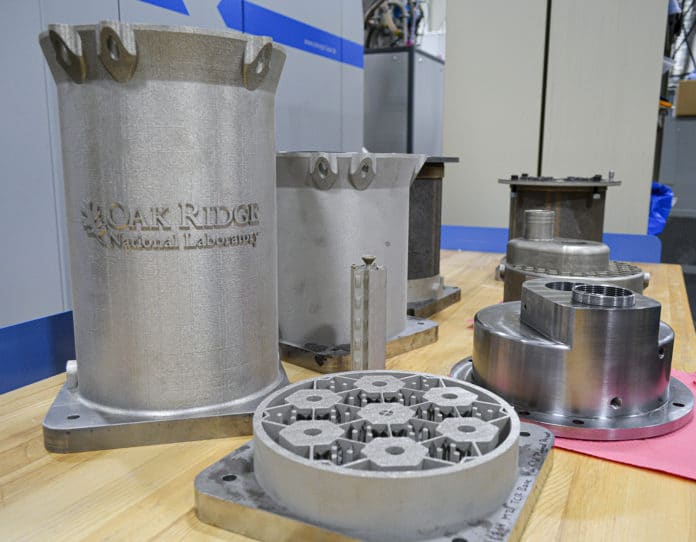Nuclear energy has played and will continue to play a significant role in the energy-generating sector of the US. It is a nearly carbon-free source and could help alleviate the tensions on the natural gas market and the risk of global climate change. However, one of the big problems with nuclear power is the enormous upfront cost as these reactors are extremely expensive to build. Additive 3D printing technologies promise to help in this.
Researchers at the Department of Energy’s Oak Ridge National Laboratory are working on a prototype of the nuclear reactor core using 3D printing technology. The most important element of a nuclear reactor was printed as part of the Transformational Challenge Reactor (TCR) program.
In accordance with the TCR program, the demonstration of the additive micro-reactor manufactured by the additive printing method aims to create an advanced, full-sized, 3D-printed reactor with integrated sensors and modern controls from fewer components by 2023.
For the United States, this program is critical. There are 98 nuclear reactors in 30 states across the country, most of which are relied on materials, fuels, and technology pioneered in the 1950s and ’60s. High costs and decades-long construction times have limited the United States to building only one new nuclear power plant in the last 20 years. Also, replacing the old generation reactors will be extremely difficult and costly for many reasons.
The TCR Demonstration Program, therefore, was created to accelerate this process, while significantly reducing costs by taking advantage of additive manufacturing technology using high-temperature 3D printing, combining with the use of advanced materials and reactor design of the 21st century. The prototype of the core of the nuclear reactor presented by the ORNL laboratory is made of stainless steel grade approved for use in nuclear.
So far, the program has completed several experiments, including the selection of core design, and a three-month “sprint” that demonstrated the agility of the additive manufacturing technology to quickly produce a prototype reactor core.
“We have been aggressively developing the capability to make this program a reality over the last several months, and our effort has proven that this technology is ready to demonstrate a 3D-printed nuclear reactor core,” said Kurt Terrani, the TCR technical director. “The current situation for nuclear is dire. This is a foundational effort that can open the floodgates to rapid innovation for the nuclear community.“
“By using 3D printing, we can use technology and materials that the nuclear community has been unable to capitalize on in the last several decades. This includes sensors for near-autonomous control and a library of data and a new and accelerated approach to a qualification that will benefit the entire nuclear community,” Terrani said.
The team is now focusing on refining the selected design and the processes that will ensure an optimal and reliable energy system.
